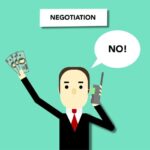Imagine your e-commerce sales funnel as a pipeline, where instead of water, it's supposed to channel potential customers towards making a purchase. However, you've noticed a trickle where there should be a steady flow. This underperformance could stem from a variety of issues, ranging from a less than stellar customer experience to failing to keep pace with the latest market trends and technological advancements. Perhaps your website suffers from slow loading times, or maybe the checkout process is more of a maze than a straightforward path. It's also possible that your product presentations aren't hitting the mark, or customer feedback is being overlooked. The reasons can be manifold, and pinpointing them is crucial. As we explore these potential pitfalls, you'll discover actionable insights and strategies designed to transform that trickle back into a robust stream, ultimately optimizing your funnel for increased conversions and customer satisfaction.
Key Takeaways
- Identifying weaknesses in the sales funnel and analyzing the customer journey can help improve the user experience and reduce cart abandonment.
- Optimizing the checkout process and ensuring simplicity can help convert clicks into sales and minimize cart abandonment.
- Effective after-sale service and clear return policies are crucial in increasing customer lifetime value and building trust and reliability in your brand.
- Conducting competitor analysis and leveraging online tools can help identify opportunities and threats, adjust sales funnel strategies, and remain competitive in the market.
Identifying Weak Points
To bolster your e-commerce platform's performance, it's crucial to first pinpoint and address the specific weaknesses in your sales funnel. Analyzing your e-commerce sales funnel through a data-driven lens can reveal why you're facing low conversion rates. Start by scrutinizing your customer journey, focusing on the checkout process to understand patterns in cart abandonment. Often, the root causes are as simple as a lengthy page load time that deters website visitors, directly impacting your user experience negatively.
Further, delve into the analytics to identify any friction points within your sales funnels. A/B testing can be a game-changer here; it allows you to compare different versions of your web pages to see which performs better in terms of engaging users and facilitating a smooth journey towards purchase. Remember, every second counts. A delay in page load can cause significant drops in customer retention.
Moreover, regularly evaluating the user experience offers insights into how intuitive your platform is for your audience. The goal is always to minimize obstacles on their path to purchase. By continuously refining these aspects of your e-commerce site, you're not just serving your business objectives but significantly enhancing the service you provide to your customers.
Website User Experience
Given the pivotal role of Website User Experience in e-commerce success, it's imperative to scrutinize every facet, from navigation to payment options, ensuring they collectively foster a seamless shopping journey. Your website's UX design directly influences the decision-making process of online shoppers. An intuitive layout, efficient page speed, and straightforward call to action on landing pages aren't just niceties—they're necessities. These elements, when optimized, serve your desire to provide an unparalleled shopping experience.
Investing in UX design means more than just a visually appealing eCommerce website; it encompasses ensuring flawless navigation, detailed product descriptions, vivid images, and secure payment methods. It's about creating an environment where online shoppers feel informed, valued, and secure. Clear return policies, along with transparent transportation and delivery times, significantly enhance the user experience, reassuring customers of their choices.
Product Presentation
Nearly every online shopper's decision is significantly influenced by product presentation, making high-quality images and detailed descriptions not just beneficial but essential for enhancing e-commerce success. Utilizing professional-grade photos for your product pages can positively impact customer perception and drive purchasing decisions. High-resolution images are expected by customers, especially smartphone users, who are highly influenced by visual stimuli.
To create converting product pages, incorporate clear and compelling product descriptions alongside these high-quality images. This approach not only showcases your products in the best light but also communicates your value proposition effectively. Remember, 90% of Etsy customers consider image quality crucial in their purchasing decisions, underscoring the importance of investing in top-notch product images and videos.
Furthermore, augmenting your product pages with informative product descriptions, customer reviews, and display trust badges can significantly increase consumer confidence. These elements help to build a compelling product narrative that resonates with your audience. Also, consider integrating product recommendations to guide customers through your offerings, enhancing their shopping experience. By strategically presenting your products, you're not just selling an item; you're offering a solution and experience tailored to meet your customers' needs.
Customer Feedback
Harnessing customer feedback is a crucial strategic tool for pinpointing and addressing the weaknesses in your e-commerce sales funnel, enabling a more personalized and optimized shopping experience. By actively soliciting customer feedback, you're not just listening; you're engaging in a strategic conversation that sheds light on your funnel's strengths and areas ripe for improvement. This approach is vital for understanding customer needs, enhancing product presentation, and refining the overall shopping journey.
Implementing changes based on customer feedback can significantly boost customer loyalty. When customers feel heard, they're more likely to develop trust and credibility towards your brand, transforming them into repeat customers. Moreover, this feedback loop allows you to tailor the customer service and experience precisely to what your consumers say they expect and need.
Strategically analyzing customer feedback provides a data-driven foundation for optimizing user experience and identifying pain points that may deter potential sales. This not only improves the immediate customer experience but also contributes to long-term business success by ensuring your e-commerce platform evolves in alignment with customer needs, thereby fostering customer loyalty and securing a competitive edge in the market.
Pricing Strategies
Understanding the intricacies of pricing strategies is crucial, as they directly influence a consumer's decision to purchase and can dramatically affect your e-commerce sales funnel's effectiveness. Striking the right balance in pricing is not just about attracting customers; it's about optimizing your eCommerce conversion rates and maintaining a competitive edge.
Here are three pivotal strategies to consider:
- Competitive Analysis: Use search engines and Google Analytics to study competitors in your market. Understand their pricing models and how your product stands in comparison. This insight helps you price your products competitively, ensuring you don't underprice or overprice, which could deter potential customers.
- Value Perception: Sometimes, as seen with the jeweler's case, higher prices can signal higher quality. Assess your product's value to your customers and how it solves their problems. A strategic price point that reflects this value can enhance your brand's perception and drive sales.
- Dynamic Pricing: Implement a dynamic pricing strategy that adapts to market demands, purchase history, and stock levels. This approach allows you to adjust prices in real-time, offering deals to clear stock or pricing premium during high demand periods, thus maximizing your online store's profitability.
Checkout Simplicity
Why should optimizing your checkout process be at the top of your strategic priorities for boosting e-commerce sales? Checkout simplicity is not just a convenience; it's a critical factor in converting cart and Buy clicks into actual sales. Studies show that complex checkout processes lead to higher rates of customers choosing to abandon their carts. This is a clear signal: if your e-commerce store's checkout page is cluttered, confusing, or asks for too much information, you're prompting customers to leave before completing their purchase.
To counter this, ensure your checkout process is streamlined, offering clear instructions and minimizing the steps required to finalize a purchase. Incorporating multiple payment options caters to a wider audience, reducing friction and abandonment rates. Furthermore, transparently displaying shipping costs upfront can prevent last-minute surprises that prompt abandonment.
Moreover, optimizing your checkout for mobile users and implementing a one-page checkout can significantly enhance checkout simplicity. Including trust badges also plays a vital role in reassuring customers about the security of their transactions.
After-Sale Service
Effective after-sale service transforms one-time buyers into loyal customers, significantly impacting your e-commerce business's long-term success. To elevate your online business and sustain customer loyalty, you must prioritize a seamless after-sale experience. This not only increases customer lifetime value but also fosters a sense of trust and reliability in your brand.
Consider these three critical aspects to enhance your after-sale service:
- Clear Return Policy: Ensure your eCommerce site communicates its return policy transparently. A straightforward and fair return policy removes hesitation, making customers feel secure in their purchase decisions.
- Timely Delivery: Fast and reliable delivery services are non-negotiable for keeping customers satisfied. Set realistic expectations for transportation and delivery times and strive to meet them consistently.
- Customer Feedback Loop: Utilize customer reviews and feedback to continuously improve your after-sale services. This data-driven approach helps identify areas for enhancement, ensuring your eCommerce business remains aligned with customer needs and preferences.
Competitor Analysis
Building on the foundation of strong after-sale service, it's crucial to also keep a keen eye on competitor analysis to ensure your e-commerce strategy remains ahead of the curve. Evaluating the strengths and weaknesses of your rivals is indispensable for spotting both opportunities and threats. By dissecting their strategies, pricing, marketing approaches, and how they engage with customers on social media, you'll gather actionable insights to refine your sales funnel for higher conversion rates.
Understanding the target audience of your competitors, alongside their customer feedback and market positioning, enables you to tailor your offerings in a way that resonates more effectively with potential customers. This differentiation is key to elevating your e-commerce store above the rest.
Moreover, leveraging online tools to monitor competitor performance and market trends is vital. These performance metrics provide a clear picture of where you stand in comparison and highlight areas for improvement. Adjusting your sales funnel in response to these insights ensures your online business remains competitive and relevant, ultimately driving online sales and achieving a higher conversion rate.
Frequently Asked Questions
What Is E Commerce Sales Funnel?
Your e-commerce sales funnel is a journey your customers take from discovering your product to making a purchase. It's pivotal to strategize each stage, from awareness to retention, to boost conversions and serve your audience effectively.
What Are the 5 Stages of Sales Funnels?
You're navigating through five critical stages: Awareness, Interest, Evaluation, Purchase, and Retention. Each step requires strategic, data-driven actions to effectively serve your audience and guide them towards making a purchase and remaining loyal customers.
Do Sales Funnels Really Work?
Yes, sales funnels do work. They effectively guide potential customers through the buying process, increasing conversions. By analyzing data, you can optimize each stage, making your efforts more successful in serving your audience's needs.
Why Is Sales Funnel Important?
Your sales funnel is the roadmap guiding potential customers home. It's crucial for converting leads into loyal patrons by streamlining their journey. Analyzing it helps refine strategies, ensuring your service reaches those who need it most.






